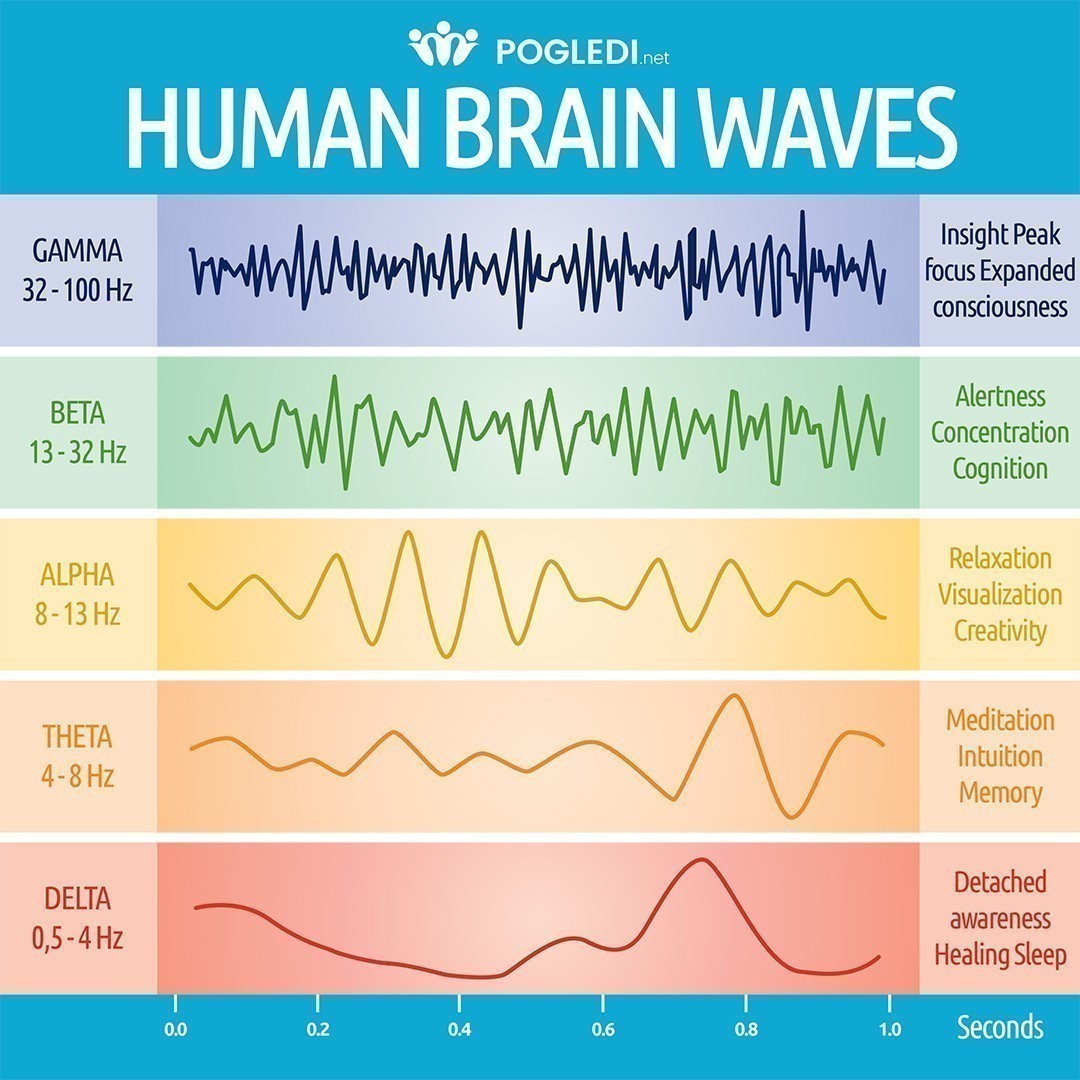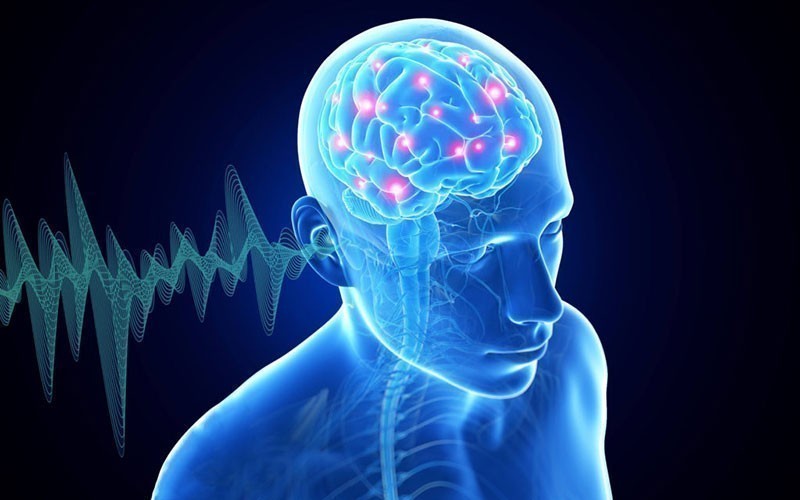What are brainwaves, what kind of “role” do they have in our lives, and perhaps the most important question, what practical benefit for us and our everyday life can the knowledge of these waves have?
Everyday things…
Almost every time we are faced with problems, from the tiny to the most extreme ones, we begin spontaneously to seek the reason for what is happening to us. Usually we start from fate, God, upbringing, past mistakes, etc. How often do we think that the main “culprit” is our brain or at least the information that is wrongly processed or is “imposed” by the wrong reading of the senses? We rarely think of this possibility, and the reason is mostly hidden in the information about the functioning of the brain itself. That is why the text that follows is intended to lighten a little bit the intricate paths our thoughts move and help us to better understand this grandiose super computer.
Background of thoughts
In the background of all our thoughts, emotions and behavior is communication between neurons in the brain. Their communication takes place through electrical impulses that, synchronized, create brainwaves. These waves can be detected by an electroencephalograph (EEG) – an apparatus that records the frequency ranges that determine the type of wave. (Otherwise, to remind you very briefly, the frequency measurement unit is Herz (Hz) and represents the number of repeat events in one second.)
So it can rightly said that we “do” within 5 types of waves (5 frequencies). They are all present at the same time, but only one is dominant. It is this dominant wave and its characteristics that determine our current state of consciousness.
Different waves – different states and vice versa
Every process that changes our perception changes the brainwave. For example, taking medication and light drugs affects our perception of the world around us and there are virtually brain waves “conducted” by the chemical substance. On the other hand, there are certain systems (e.g. traditional Eastern: yoga and meditation) that have a harmonizing effect on brainwaves.
Instability in brain rhythms is associated with a greater number of different symptoms that are mistakenly referred to as illnesses. For example, they are associated with: tics, obsessive compulsive disorder, aggressive behavior, rage, panic attacks, bipolar disorders, migraine, epilepsy, sleep apnea, tinnitus, anorexia, bulimia, diabetes, hypoglycaemia, explosive behavior and many other conditions. And these dozens of symptoms are just given as an example … It can be freely said that disturbed brainwave rhythms cause a large percentage of the various symptoms of a modern man.
By better knowledge of brain functions, one acquires the ability to correctly use his potentials and to change what was previously considered to be an unchanging genetic heritage in science. And in order to achieve this – first we need to know in detail the brain waves and their characteristics.

From the highest to the lowest
Gamma brainwaves
They are the fastest and most subtle waves. They relate to the simultaneous processing of information from different parts of the brain. Gamma waves transmit information and “help” their faster redistribution to different brain centers.
These waves were long neglected as researchers did not discover that these are waves that appear in the conditions of universal love and virtue. Gamma waves are above the neuronal activity so there is still a mystery that they are creating. It turns out that gamma waves emerge in states of extended consciousness.
Gama brainwave details
Frequency of 32 to 100 Hz
The instability of these waves (excessive jump in oscillations, whether it is an increase or decrease) leads to: anxiety, excitement, stress, ADHD, depression, incapacity to learn … Within the spiritual plan they are considered to be genius waves, held by people with a high degree of awareness and experienced by monks and visionaries.
They are also responsible for mystical and astral experiences, a high level of concentration and focus. Self-awareness and spiritual insights are of vital importance.
To balance and be “overwhelmed” by gamma waves longer, meditation is the best.
Beta brainwaves
These waves are directed towards the outside world and cognitive tasks. These are quick waves, present when we are awake, attentive, engaged in solving problems and judging, when we are focused on mental activities and when making decisions.
There are three types of beta waves:
Low beta waves are defined as relaxed attention and are present when we enjoy while reading a book, therefore, we show a certain degree of attention but without a pronounced vigilance.
Medium beta waves are present when we focus on something – for example, when we learn more. This level of beta waves reflects the degree of rational thinking.
High beta waves are present in complex thinking, the integration of new experiences, anxiety, excitement, stress … The long-running high level of beta waves are not desirable for our brain because they take away a large amount of mental energy.
Beta brainwave details
Frequency of 13 to 32 Hz
Instability: excess adrenaline, anxiety, great arousal, inability to relax, stress, ADHD, dreaming, depression, reduced cognition ability, affecting the left side of the brain, are associated with stress and fears. Non-synchronized beta waves are useful for short-term memory and routine work.
In everyday life, when you feel that you’ve “fired” from the beta waves (for example, you’re sleepy), you usually crave for some kind of energy drinks, coffee and other stimulants.
Alfa brainwaves
These waves dominate when we are relaxed and when thoughts slowly flow, when we dream and are present in some meditative states. These are the waves, the “power of the present,” the state in which our brain rests. Alpha waves help in the overall mental coordination, calmness, alertness, integration of mind and body and in learning.
At the age of six to eight, children function on alpha waves. At this stage of life, the development of the analytical mind begins interpret the information coming from the outside, to draw conclusions about how the world works. At the same time, their inner world becomes as real as the outside one. It is precisely this same presence in both worlds that enables them to be skillful imitators in that age.
Alpha brainwave ID card
Frequency of 8 to 13 HZ
Instability: dreaming, incapacity of focusing, the person is too relaxed, anxiety, high stress, insomnia, OCD …
Well-balanced impact on relaxed focus and general good health, mental coordination, long-term memory, creativity and visualization.
Often these waves connect with meditation to light.
Alpha waves will be increased: by alcohol, marijuana, relaxation agents and certain antidepressants.
Otherwise, Alfa brain waves are the easiest to spot. They can be noticed when the eyes are closed and the mind is calm. They can often be found during activities such as yoga, artistic enthusiasm, and moments before a person falls in a sleep.
Theta brainwaves
Theta waves that are active in states when senses are pulled from the outside world and directed on internal signals and sensations. When we fall asleep or have just waked up, theta is the brainwave present and when intuition and access to information that is beyond our consciousness while we are awake is intensified. In theta state, we are open to “programming” because at that time there is a thin boundary between the conscious and the subconscious mind.
In the subconscious mind there are our fears, traumas, nightmares, blockades and many more troublesome and unresolved matters, so that is the state dominated by the Theta waves, ideally to remove all that unwanted load. Theta waves are necessary for learning and remembering. Spontaneous healing (as well as theta healing) occurs precisely in the state of theta brain waves.
Children aged from the two to the six function on theta waves. Everything you say to them, how you treat them, what scares them, engages deep into their subconscious mind and influences their later life.
Theta brainwaves details
Frequency of 4 to 8 Hz
Instability: ADHD, depression, hyperactivity, impulsivity, impatience and negligence, anxiety, poor emotional awareness, stress …
They are characterized by reduced awareness, deep meditation, intuition vital for learning and memory.
Flashes of insights and inspiration, spontaneous healing in most cases takes place when Theta brainwaves are dominant.
Different depressants and drugs affect the appearance of the Theta state – although naturally achieved (e.g. by meditation, dreaming …) Theta state is ideal for healing.
According to Professor Jim Lagopoulos of the University of Sydney, “… studies have shown that theta waves indicate deep relaxation and are more frequent in highly experienced meditators. The source is probably the frontal parts of the brain, which are associated with the monitoring of other mental processes. “(It is interesting to read the study: Increased theta and alpha EEG activity during nondirective meditation.)
When we perform an automated action, then the mind is most often “turned off”, for example, washing teeth, showering and then we can run Theta waves. The research also showed a positive connection of theta waves with memory, creativity and psychological stability.
Delta brainwaves
These are very slow and “loud” waves, penetrating deep through the body and you can imagine them as slowly rhythmic drumming into the drum. They are created in the deepest meditation and in the absence of sleep. These brain waves exclude external consciousness and source empathy. In this condition, healing and regeneration takes place, and therefore a deep sleep is essential for the process of healing. (NOTE: From personal experience I know that one can “slip” in delta brainwaves during meditation which are accompanied by deep sound and a specific vibration through the central energy channel in the body. The effect of this experience of the delta wave is remarkably regenerating on the mental and physical plan.
It is believed that the delta waves are the bridge to Jung’s “collective unconscious”.
From birth to the second year of life, children function with the domination of delta brainwaves. For example, this is the situation when babies sleep with open eyes and delta waves dominance explains why the newborn can’t stay awake for more than a few minutes. Information from the environment that the newborn is processed is directly recorded in his subconscious mind, because it does not have the ability to analyze, edit and judge them.
Delta brainwave details
Frequency of 0.5 to 4 Hz
The instability comes: in brain injury, inability to think (different causes), severe ADHD, inability to regenerate the body, inability to revitalize the brain, poor sleep…
Characteristics: deep sleep and growth hormone release, unconscious state.
The “entry” into this condition is deep sleep, as well as use of certain depressants.
And now … a surprise … meet Epsilon brainwaves
Y brainwaves
The slowest brainwaves are seen in those people who have achieved very advanced meditation levels. They are the basis for more brain functions. Because of the slowness of these waves, it is difficult to detect and measure them so that they are little known. They appear in very deep and advanced states of yoga and meditation, in ecstatic states of consciousness, in spiritual and out of body mystical experiences. Previous research has shown that it is not possible to predict when these waves will appear.
Y brainwaves details
Frequency less than 0.5 Hz
They can be experienced in very deep and advanced states of meditation, in ecstatic states of consciousness.
That’s all for now
You’ve met brainwaves, their characteristics, possibilities and have already figured out how to manage them. I suppose you already have some ideas that you can move from a state of excitement to a state of relaxation, how you can improve concentration, and how quickly and efficiently, without the use of any drugs or psychoactive substances, you can “jump” into the state you want.
Learn more about techniques and shortcuts for quick bridging and surfing along the brainwaves, as well as on volunteer management – in one of the following posts.
Meditation until reunion
Until the next post about brainwaves, try a simple meditation that will help you feel the benefits of rapid regeneration of the body during a stressful day or enter the desired waves. All you need to do is follow the instructions below:
Sit in a comfortable position and close your eyes.
Breathe (expand your stomach) and exhale (pull your stomach in) and repeat this 3 times and then continue to breathe in your natural rhythm.
Straighten the spine, relax the jawbone, neck and shoulders, the joints of the arms and the legs, feel that your entire body is relaxed.
Pay attention to your own breathing. Leave all thoughts, do not fight to stop them, just let them pass and let your attention be on the breath. At the slight rhythm of the inhale-exhale … Inhale … Exhale … Inhale …. Exhale …
Practice this exercise for five to ten minutes at the beginning and in time extend the duration of your meditation to 15 minutes. When you finish meditation, slowly open your eyes, gently move your hands and legs and slowly start. Feel the relaxation and easiness that you have created during your meditation.



